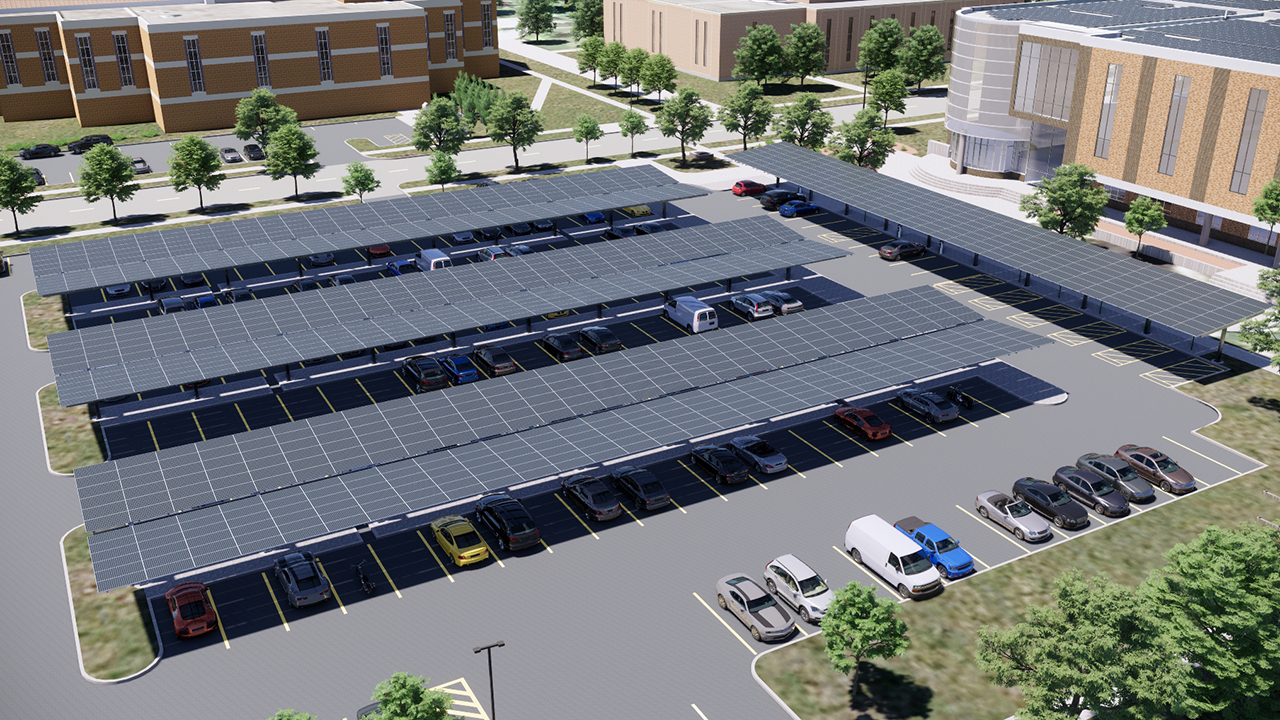
By Fall of next year, the largest solar panel energy system on any Minnesota State campus will be right here at Winona State University.
That’s just one part of the $12 million campus-wide Leading Energy Savings and Sustainability (LESS) project that WSU is moving forward with that will greatly increase building efficiency and renewable energy resources for the university. Through the state’s Guaranteed Energy Savings Program and a partnership with the construction engineering firm McKinstry, the project will cut carbon emissions by 25 percent a year, save 16 percent in gallons of water used a year, and will include drastic energy conservation upgrades within 10 different areas of impact on campus.
After the LESS project is complete, WSU will be the most efficient university in the MN State System in terms of energy cost compared to the amount of building space used on campus.
“Our mission is to be a community of learners improving our world,” WSU President Scott Olson said. “This energy project helps us serve our community, helps students studying data collected on energy use, and helps us improve our world by keeping the university sustainable into the future.”
With construction planned for October and completion in August of 2022, just a few of the 10 impact areas include replacing 21,000 light fixtures with LED technology, installing solar panels on 6 rooftops and on 4 future carports, installing a new irrigation system that will use smart controls to adjust sprinkler usage based on real time weather data, and replacing every toilet, shower head, urinal, and faucet aerator with modern water saving fixtures.
Others include weatherproofing buildings, modernizing heating and cooling systems, installing destratification fans in high-ceiling areas, and upgrading the pool with automated controls that test and regulate filtration and chemical needs.
The upgrades and efforts are estimated to save 9,816,000 gallons of water a year and 225,809 therms of natural gas a year. The solar panels on campus alone will produce enough power to feed 170 average homes a year.
“The ultimate goal in the future is to be sustainable, energy-wise, with net zero carbon impact,” WSU Campus Sustainability Coordinator Nathan Engstrom said. “Looking longer term this brings us closer toward 100% renewable energy.”
With the way the state’s Guaranteed Energy Savings Program works, WSU will be able to pursue the project with no money down. Instead, the program uses a lease purchase agreement where WSU leases the equipment and upgrades, then pays it off over the period of 18 years. With the money and energy being saved from the renewable energy efforts, WSU can make payments on the lease while still saving money in energy costs.
“We’re doing everything we can to carve out the most resource savings and carbon cutting solutions for the campus and to do that in the most cost-effective way possible. This project allows WSU to take bold climate action and sustainability leadership to new heights.”
“We’re always looking for ways to save money and responsibly stretch tuition dollars and taxpayer support further,” Olson said. “This energy savings plan will help lower our costs in a sustainable way.”
Engstrom said that after years of research, the GESP program rose to the top as the best option to move forward with this large of a renewable energy effort.
“It’s been a four-year process to get to this point,” Engstrom said. “We’re doing improvements to campus that we would have no other way of doing.”
Not only will it make significant headway toward the goal of net zero, but it will also improve the student experience and step WSU forward as a responsible team player in the 21st century.
“We’re doing everything we can to carve out the most resource savings and carbon cutting solutions for the campus and to do that in the most cost-effective way possible,” Engstrom said. “This project allows WSU to take bold climate action and sustainability leadership to new heights.”
Learn more about the LESS Project here.
